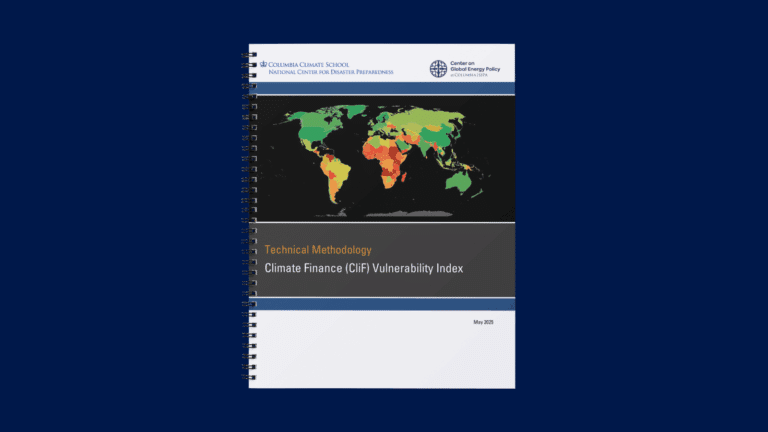Trump team pushes for ouster of top IEA official
The administration and its Republican allies in Congress say the International Energy Agency discourages fossil fuel investments around the world.
Current Access Level “I” – ID Only: CUID holders, alumni, and approved guests only
Commentary by Johannes Urpelainen • April 04, 2018
Driven by decades of aggressive government policy, renewable electricity generation has grown rapidly. This expansion has, in turn, contributed to lower costs and renewable power that is no longer prohibitively expensive. In fact, wind and solar power are already cheaper than coal-fired power generation or natural gas power generation. As the primary obstacles to a renewable energy transition is no longer cost, the old approach of subsidizing renewable generation until it can compete with fossil fuels no longer makes sense. Rather, the challenge stems from the need to integrate intermittent power supplies into the electric grid, and governments interested in clean energy and decarbonization can use policy to remove systemic obstacles to growth.
Governments can address this problem with real-time electricity pricing, two-way metering, demand-side management to match supply and demand, and with policies that separate electricity consumption from the cost of system maintenance. Most importantly, governments need to invest in technology innovation to support energy storage and other measures to mitigate the problem of intermittency. These policies can unleash an era of renewable energy progress and thus contribute to climate mitigation, clean air, and energy security.
In 2008, both solar and wind power were very costly propositions (Lazard 2014). In 2009, the levelized cost of wind electricity generation in the United States was $101-169 per megawatt-hour (MWh) and the same cost for solar power $323-394. The price of coal, on the other hand, was about $66-151 per MWh at the time.
By 2017, however, both the sun and the winds could offer affordable power (Lazard 2017). At that time, the costs of wind and solar power had, respectively, fallen to $43-48 and $30-60 per MWh. In a stark contrast, coal-fired power generation cost $60-143. Both wind and solar power had lower generation costs than coal. While these costs do not consider the need for storage or other problems with integrating intermittent power supplies into the grid, they do show that generation costs are no longer an obstacle to a comprehensive transition to a renewable power system.
These cost reductions have contributed to a global investment boom in renewables (IEA 2017). According to the International Energy Agency (IEA 2017), renewable generation capacity increased by about 165 gigawatts in 2016, accounting for two-thirds of all new capacity. This growth was worldwide with China, India, and the United States leading the way. Record-low auction prices for solar power in the Middle East, Latin America, and India fell as low as $30 per MWh.
It was not the invisible hand of markets that made renewable energy affordable. As our research in Renewables: The Politics of a Global Energy Transition (Aklin and Urpelainen 2018) shows, the cost reductions in renewable power generation have followed aggressive support policies in forerunner countries such as Germany, Denmark, and China. When renewable energy was still expensive relative to coal and natural gas, governments used policies such as feed-in tariffs to offer generous benefits and reduce risk to renewable power producers. These were often high-cost policies, as Germans may have at times paid over twenty billion euros for their renewable energy feed-in tariff (Aklin and Urpelainen 2018), but they got the job done: renewable energy generation grew over time, and the costs fell precipitously.
Once the cost of renewable energy reached a critical threshold, governments around the world pushed it further down with auctions and other market-based mechanisms. Even though renewable energy was still more expensive than conventional fossil fuels, the cost difference was sufficiently small to encourage project developers to respond to competitive tenders and auctions. Unlike feed-in tariffs, auctions rewarded project developers with the lowest costs and thus led to accelerated technological and business innovation.
Renewable energy has by now achieved a certain momentum that will make it difficult to stop, despite the opposition it faces from some governments. But renewables still face major obstacles to the kind of exponential growth the world needs to avoid dangerous climate disruption. Because of the intermittent nature of wind and solar power, going from marginal amounts of renewable power generation to a system that is dominated by renewables requires a policy revolution. In Germany, for example, intermittent solar and wind power accounted for almost 20% of all generation in 2016 (IEA 2017). At such levels, managing the intermittency becomes a critical policy challenge.
To address these challenges, new policies will need to encourage real-time pricing of electricity to avoid an oversupply of renewable power when the sun shines and the wind blows. Importantly, policymakers need to look for ways to enable two-way metering to ensure that distributed power generators can sell their surplus to other consumers when demand is high. Policy should also include demand-side interventions to shift electricity consumption profiles such that demand meets the supply of wind and solar power.
Additionally, all electricity consumers should contribute to covering the cost of the electric grid regardless of how many kilowatt-hours they consume and produce. If consumers paid a fee for the costs of the electric grid, distribution power generation would not threaten the finances of grid maintenance. Quite to the contrary, two-way metering would enable micro-level power exchange between households and companies that both produce and consume renewables.
Finally, technological innovation remains a critical driver of renewable energy expansion. Besides improved policy and grid management, less expensive energy storage both on small and large scales would solve the problem of intermittency. Policies should support innovations that enhance the competitiveness of renewable energy, with a particular emphasis on battery storage.
While the cost of renewable electricity generation has collapsed, removing systemic obstacles to growth in renewable energy use requires a new generation of renewable energy policy. Markets alone cannot remove barriers to a carbon-free power sector, and governments around the world should adopt new strategies focused on solving the problem of intermittency. Such a policy revolution can unlock the full potential of renewable energy.
Aklin, M and Urpelainen, J (2018). Renewables: The Politics of a Global Energy Transition. MIT Press.
IEA (2017). https://www.iea.org/publications/renewables2017/
Lazard (2014). https://www.lazard.com/media/1777/levelized_cost_of_energy_-_version_80.pdf
Lazard (2017). https://www.lazard.com/perspective/levelized-cost-of-energy-2017/
Sivaram, V (2018). Taming the Sun: Innovations to Harness Solar Energy and Power the Planet. MIT Press.
The Climate Finance (CliF) Vulnerability Index is designed to provide a comprehensive understanding of climate vulnerability for nation states in order to improve the targeting and provision of climate change adaptation financing.

Energy abundance isn't a climate strategy—it delays clean energy progress, harms global cooperation, and repeats past policy mistakes.

Full report
Commentary by Johannes Urpelainen • April 04, 2018